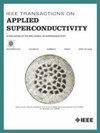Long-Term Changes in Parameters for Nb-Based Superconducting Digital Circuits
IF 1.7
3区 物理与天体物理
Q3 ENGINEERING, ELECTRICAL & ELECTRONIC
引用次数: 0
Abstract
The same process evaluation chips for Nb-based superconducting digital circuits were measured at liquid He temperature (4 K) just after fabrication and after storage at room temperature for up to 16 years. The critical current (铌基超导数字电路参数的长期变化
用于铌基超导数字电路的相同工艺评估芯片在制造后的液态He温度(4 K)下进行了测量,并在室温下储存了长达16年。比较了存储前后约瑟夫森结的临界电流(Ic)、Nb-Nb触点的电阻、电感和Ic。十年后,Ic降低了约5%,电阻增加了约2%。变化既不取决于JJ面积,也不取决于电阻宽度。因此,我们认为这是临界电流密度(Jc)和薄片电阻(Rsq)的变化。由于热退火后芯片的Jc并没有发生变化,因此我们认为长期Jc的变化与热退火的机制相同。虽然Jc的长期变化对超导数字电路的运行并不重要,但在某些情况下可能导致电路故障。因此,在制造或冷藏后,需要采取一些措施,如轻退火。电阻变化对超导数字电路工作的影响很小。未观察到电感变化。Nb-Nb触点的Ic在十年内下降了几十个百分点,但仍然足以满足数字电路的功能。
本文章由计算机程序翻译,如有差异,请以英文原文为准。
求助全文
约1分钟内获得全文
求助全文
来源期刊

IEEE Transactions on Applied Superconductivity
工程技术-工程:电子与电气
CiteScore
3.50
自引率
33.30%
发文量
650
审稿时长
2.3 months
期刊介绍:
IEEE Transactions on Applied Superconductivity (TAS) contains articles on the applications of superconductivity and other relevant technology. Electronic applications include analog and digital circuits employing thin films and active devices such as Josephson junctions. Large scale applications include magnets for power applications such as motors and generators, for magnetic resonance, for accelerators, and cable applications such as power transmission.
 求助内容:
求助内容: 应助结果提醒方式:
应助结果提醒方式:


